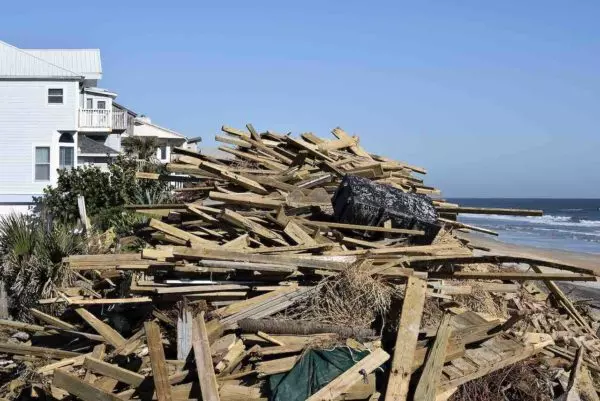
Natural disasters can damage asbestos-containing materials. Damaged asbestos products can release fibers into the air and environment. This can pose a serious health risk for first responders, residents, and cleanup and relief crews.
Cleanup and relief efforts after a natural disaster can be frantic. However, individuals should be aware of threats to their health during this process. Contact with these materials may put individuals at risk for health issues, such as mesothelioma and asbestosis.
How Does Asbestos End up on Beaches?
Hurricanes, tornados, floods and other natural disasters may leave asbestos debris on beaches. This occurs when structures and materials containing asbestos are damaged. These fibers may contaminate the air and surrounding environment. While prolonged exposure to asbestos is the most dangerous, there is no safe level of exposure.
Several groups may come into contact with asbestos during disaster cleanups, including:
- Cleanup crews
- First responders
- Rebuilding teams
- Relief teams
- Residents
As a result, health and environmental experts have warned the public to be wary of asbestos after natural disasters. This includes on beaches and in the air after natural disasters.
Global Instances of Asbestos Exposure on Beaches
Asbestos often ends up on beaches after hurricanes, floods and tropical storms. In addition to fallen debris, asbestos can travel by air and wash ashore from bodies of water.
In many instances, health officials will warn citizens about beach asbestos exposure, including:
- Colwyn Bay, UK: In 2017, the pier at Colwyn Bay began to collapse. Officials warned asbestos sheeting in the pier’s pavilion building could wash up onto the beach.
- Darwin, Australia: Asbestos is often found along the shore of Darwin, Australia. This is due to debris left over from World War II bombing and Cyclone Tracy in 1974. Tracy caused damage to 70% of the city. The cyclone ripped apart asbestos-containing materials and deposited them into the environment.
- Illinois Beach State Park, Chicago: United States Environmental Protection Agency (EPA) officials warn Chicago residents of asbestos runoff from a cleanup site located on the shores of Lake Michigan. The Johns-Manville Asbestos Superfund site has led to asbestos deposits into the lake. EPA measurements confirmed millions of asbestos fibers per liter of water in the lake.
- Jersey Shore, USA: Hurricane Sandy made landfall along the east coast in 2012. Regional EPA officials warned New Jersey residents and cleanup crews about various hazards, including asbestos.
- Prestwick Beach, UK: Officials closed this Scottish beach in mid-2016 after citizens reported seeing asbestos-containing materials.
Local officials will often close public beaches when asbestos is discovered. They may contact governmental authorities for cleanup assistance. Licensed cleanup crews should be the only ones to pick up and dispose of asbestos-containing materials.
How to Prevent Asbestos Exposure on Beaches During Disaster Cleanup
The only way to prevent exposure is to avoid areas where there is known asbestos. Asbestos remediation professionals should be the only ones to handle the mineral.
These professionals are trained in safely identifying, handling and disposing of the mineral. Untrained asbestos handling can be dangerous and could expose the handler and all others coming in contact with the contaminated material.
Common safety practices include wetting down asbestos materials and wearing personal protective equipment (PPE) to avoid contact.
Joint Centers for Disease Control and Prevention (CDC) and EPA recommendations instruct citizens to avoid coming into contact with asbestos debris. For disposal, citizens should observe extreme caution, avoid burning asbestos debris and seek help from a professional.
If you suspect debris contains asbestos, contact local officials. Asbestos abatement professionals are the best people to handle remediation and disposal.




